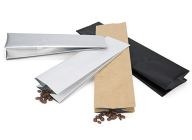- Afrikaans
- Albanian
- Amharic
- Arabic
- Armenian
- Azerbaijani
- Basque
- Belarusian
- Bengali
- Bosnian
- Bulgarian
- Catalan
- Cebuano
- chinese_simplified
- chinese_traditional
- Corsican
- Croatian
- Czech
- Danish
- Dutch
- English
- Esperanto
- Estonian
- Finnish
- French
- Frisian
- Galician
- Georgian
- German
- Greek
- Gujarati
- haitian_creole
- hausa
- hawaiian
- Hebrew
- Hindi
- Miao
- Hungarian
- Icelandic
- igbo
- Indonesian
- irish
- Italian
- Japanese
- Javanese
- Kannada
- kazakh
- Khmer
- Rwandese
- Korean
- Kurdish
- Kyrgyz
- Lao
- Latin
- Latvian
- Lithuanian
- Luxembourgish
- Macedonian
- Malgashi
- Malay
- Malayalam
- Maltese
- Maori
- Marathi
- Mongolian
- Myanmar
- Nepali
- Norwegian
- Norwegian
- Occitan
- Pashto
- Persian
- Polish
- Portuguese
- Punjabi
- Romanian
- Russian
- Samoan
- scottish-gaelic
- Serbian
- Sesotho
- Shona
- Sindhi
- Sinhala
- Slovak
- Slovenian
- Somali
- Spanish
- Sundanese
- Swahili
- Swedish
- Tagalog
- Tajik
- Tamil
- Tatar
- Telugu
- Thai
- Turkish
- Turkmen
- Ukrainian
- Urdu
- Uighur
- Uzbek
- Vietnamese
- Welsh
- Bantu
- Yiddish
- Yoruba
- Zulu
canvas material
Exploring the Versatility of Canvas Material
Canvas, a sturdy fabric made from cotton, linen, or synthetic fibers, has long been admired for its durability and versatility. Historically used for making sails, tents, and awnings, canvas has evolved into a popular material in various domains, including fashion, art, and home décor. Its unique properties make it an ideal choice for both functional and aesthetic applications.
The Origin and Development of Canvas
The word canvas comes from the Latin word cannabis, referring to hemp, which was the original material used to create this versatile fabric. Sailing culture in ancient times relied on canvas for the production of sails that could withstand the harsh marine environment. Over the years, as materials technology advanced, cotton and synthetic fibers became more popular, leading to the production of different types of canvas, including plain, duck, and waterproof variants.
Properties of Canvas Material
One of the most compelling features of canvas is its exceptional durability. Canvas is known for its strength and resilience, which makes it resistant to wear and tear. This attribute is particularly advantageous in applications where longevity is essential, such as outdoor gear and luggage. Moreover, canvas can withstand heavy loads, making it a popular choice for bags, backpacks, and tarps.
Another significant characteristic of canvas is its breathability. Unlike synthetic materials, canvas allows air to flow through, making it a comfortable choice for summer clothing and footwear. This moisture-wicking capability also prevents the accumulation of odor, adding to its appeal in fashion.
In addition to its functional properties, canvas offers a unique aesthetic quality. The fabric has a natural texture that lends itself well to various design styles. Whether it’s used in contemporary home décor or traditional art canvases, the beauty of canvas lies in its simplicity and versatility. Artists often prefer it for painting, as it provides an excellent surface for acrylics and oil paints. The texture of canvas enhances the depth and vibrancy of the artwork, making it a favored medium for many creatives.
canvas material

Canvas in Fashion
In the fashion industry, canvas has carved out a niche for itself. Canvas shoes, such as sneakers and slip-ons, are not only practical but also stylish, appealing to a diverse audience. Brands often utilize colorful prints and designs on canvas to create trendy footwear and bags that resonate with consumers' tastes.
Furthermore, the rise of sustainable fashion has led to an increase in the use of organic canvas. Eco-conscious brands are now producing canvas products made from recycled materials or organically grown fibers. This shift not only reduces the environmental impact of producing fashion items but also caters to the growing demand for sustainable products.
Canvas in Home Décor
Canvas is also a popular choice in home décor. From wall art to upholstery, its versatility allows homeowners to experiment with different designs easily. Canvas prints can transform a bland wall into an artistic focal point. Many designers also utilize canvas for creating durable and stylish furniture covers, ensuring that living spaces remain both functional and fashionable.
Conclusion
In conclusion, canvas material embodies a remarkable blend of durability, functionality, and aesthetic appeal. Its historical roots and ability to adapt to modern needs make it a timeless choice across industries. Whether in fashion, art, or home décor, canvas continues to inspire creativity and innovation. As consumers become more environmentally conscious, the evolution of canvas products will likely lead to even more sustainable and stylish options in the future. Embracing canvas means embracing a rich tradition while stepping into a versatile world filled with possibilities.













